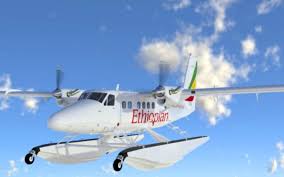
The new Twin Otter 300‑G aircraft, renowned for their short take-off and landing capabilities, rugged performance in challenging environments, and flexible payload configurations, will be operated by Ethiopian Airlines Express, the airline’s regional and feeder subsidiary.
Ethiopian Airlines CEO Mesfin Tasew said that the acquisition supports the airline’s mandate to extend air services into remote corners of Ethiopia and beyond. “These aircraft are ideal for boosting tourism, medical evacuation, humanitarian missions, and SME development in areas unreachable by conventional jets,” he stated.
The Twin Otters will be deployed on routes linking major hubs in Addis Ababa with previously hard-to-access mountain towns, riverside communities, and regional development zones. Ethiopian Airlines anticipates that expanded air service will stimulate local economies by improving airflow of people, goods, and emergency services.
Industry experts note that such lighter aircraft have become vital tools in Africa’s aviation landscape, enabling connectivity where infrastructure remains limited—typically requiring runways as short as 300 meters and minimal ground support facilities.
Deliveries of the aircraft are expected by mid-2026, with pilots and engineers undergoing specialized training in partnership with De Havilland Canada and Canadian flight schools. Ethiopian Airlines also intends to retrofit one of the Twin Otters with amphibious floats, extending operations to water-borne destinations across the country’s lakes and rivers.
The deal underscores Ethiopian Airlines’ continued strategy of modernizing its fleet with a mix of wide-body, narrow-body, and regional aircraft, tailored to meet diverse operational needs—from global routes to domestic access in remote regions.
With this move, Ethiopian Airlines is charting a course toward enhanced regional connectivity, sustainable development, and greater accessibility for communities across Ethiopia and neighboring countries.

